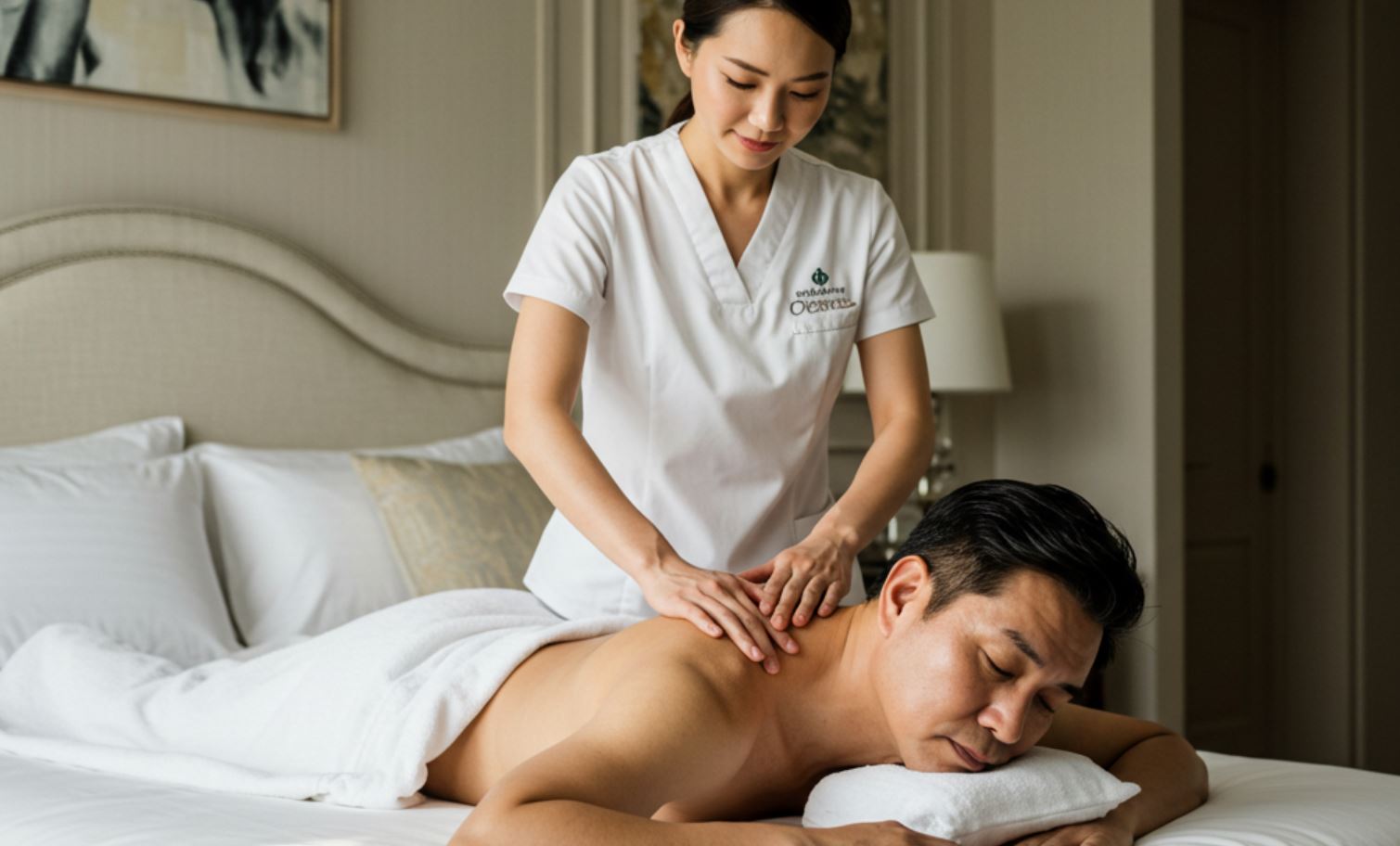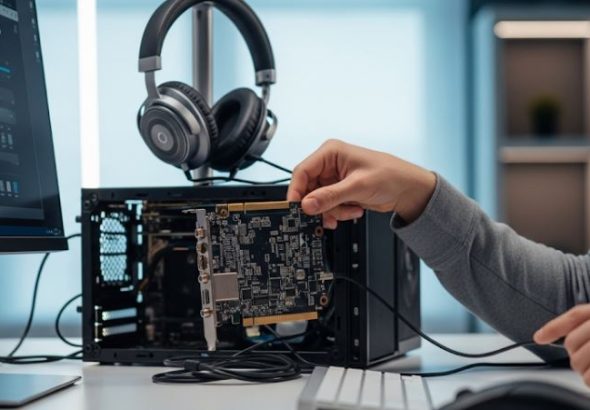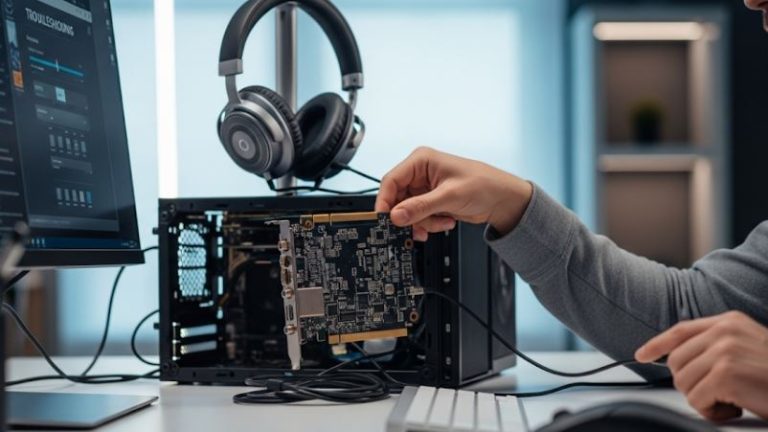
In a world that often rushes, leaving little room for deep connection—either with ourselves or with others—practices that encourage presence, intimacy, and holistic well-being are gaining significant attention. Among these, Tantra massage stands out as a profound, often misunderstood, yet deeply transformative practice. This article aims to illuminate the true nature of Tantra massage, exploring its roots, principles, techniques, and the myriad benefits it can offer to those who approach it with an open mind and a receptive heart. It is more than just a physical experience; it is a meditative journey that incorporates touch, breath, and mindful presence to awaken energy and foster a deeper connection with the self.
Demystifying Tantra: The philosophical bedrock 🧘♀️
Before delving into the specifics of Tantra massage, it’s crucial to understand the broader philosophical and spiritual tradition from which it emerges: Tantra. Originating in India over a thousand years ago, Tantra is a complex and multifaceted spiritual path that embraces the totality of human experience as a means to achieve enlightenment and liberation. Unlike some spiritual traditions that advocate for detachment from the material world, Tantra encourages the practitioner to engage with the world, including the body and its senses, in a conscious and sacred manner.
The word „Tantra” itself is derived from Sanskrit, often translated as „to weave,” „to loom,” or „to extend.” This suggests a system of interconnected practices and principles that weave together various aspects of life to create a holistic tapestry of spiritual growth. Key tenets of Tantra include:
- The interconnectedness of all things: Tantra sees the universe and everything within it as a manifestation of divine consciousness.
- The sacredness of the body: The human body is not seen as an obstacle to spiritual progress but as a temple, a microcosm of the universe, and a vehicle for experiencing the divine.
- The power of energy: Tantra places great emphasis on understanding and working with universal life force energy, known as Prana or Shakti. This energy is believed to flow through channels (nadis) and energy centers (chakras) within the body.
- The importance of experience: Tantra is an experiential path, emphasizing direct experience and personal transformation over dogma or blind faith.
- The union of opposites: Tantra often works with the concept of polarity – masculine and feminine energies (Shiva and Shakti), spirit and matter, consciousness and energy – seeking to integrate and harmonize these forces.
It’s important to note that Tantra is a vast field, encompassing various schools of thought, rituals, meditations, yoga practices, and texts. Tantra massage is one specific application of Tantric principles, focusing on the body as a gateway to heightened awareness, healing, and energetic awakening.
What exactly is Tantra massage? Unveiling the practice 🕊️
Tantra massage, at its core, is a meditative and ritualistic form of touch therapy that aims to awaken and circulate energy throughout the body, leading to heightened states of consciousness, deep relaxation, emotional release, and a profound sense of connection. It is a holistic practice that considers the individual as a whole – body, mind, and spirit – and uses conscious, loving touch to facilitate healing and transformation.
Unlike conventional massages that primarily focus on muscular relaxation or pain relief, Tantra massage has a broader and deeper intention. While it can be deeply relaxing and physically pleasurable, its ultimate goal extends beyond mere physical sensation. It seeks to:
- Awaken dormant energy (Kundalini): A central aim is to stimulate and guide the body’s subtle energies, particularly the Kundalini energy, which is often depicted as a coiled serpent at the base of the spine. When awakened, this energy is believed to travel upwards through the chakras, leading to spiritual enlightenment.
- Expand consciousness: By bringing mindful awareness to physical sensations and energy flow, Tantra massage can help individuals transcend ordinary states of consciousness and access deeper levels of awareness.
- Heal emotional blockages: The body stores emotional trauma and tension. The mindful and compassionate touch in Tantra massage can help release these blockages, leading to emotional healing and a greater sense of freedom.
- Cultivate self-love and acceptance: The practice encourages individuals to embrace their bodies and their sensuality with love and acceptance, fostering a positive body image and a deeper connection to their inner selves.
- Enhance intimacy and connection: While not always practiced in a partnered context, the principles of Tantra massage can greatly enhance intimacy and connection by fostering presence, vulnerability, and a deep appreciation for the sacredness of touch.
- Integrate sensuality and spirituality: Tantra does not shy away from sensuality but rather sees it as a powerful force that, when approached with awareness and reverence, can be a path to spiritual awakening. Tantra massage helps to bridge the often-perceived gap between sensuality and spirituality.
It is crucial to differentiate authentic Tantra massage from services that may misuse the term for purely sexual purposes. True Tantra massage is a spiritual practice rooted in ancient traditions, emphasizing mindfulness, respect, consent, and the sacredness of the experience. The focus is on energy and awareness, not just physical gratification.
The core principles guiding Tantra massage 🙏
Several fundamental principles underpin the practice of Tantra massage, distinguishing it from other forms of bodywork:
- Conscious Touch: This is perhaps the most defining characteristic. Every touch in Tantra massage is delivered with full presence, intention, and loving-kindness. The practitioner is not merely going through a set of motions but is deeply attuned to the receiver’s energy and responses. The quality of touch is paramount – it can be gentle, firm, nurturing, or stimulating, but it is always mindful and respectful.
- Mindfulness and Presence: Both the giver and the receiver are encouraged to be fully present in the moment, observing sensations, emotions, and energy flow without judgment. This mindful awareness is key to unlocking the transformative potential of the massage.
- Breath (Pranayama): Breath is considered a vital tool in Tantra for moving energy and deepening awareness. Specific breathing techniques may be incorporated by both the practitioner and the receiver to enhance energy flow, promote relaxation, and intensify sensations. Synchronized breathing can also create a powerful energetic connection.
- Energy Awareness (Prana and Chakras): Tantra massage works extensively with the body’s subtle energy system. Practitioners aim to identify and release energy blockages, balance the chakras (the body’s main energy centers), and facilitate the free flow of Prana. Understanding the chakra system can deepen one’s appreciation for this aspect of the practice.
- Ritual and Sacred Space: A Tantra massage session is often approached as a sacred ritual. The environment is typically prepared to be calming, beautiful, and conducive to relaxation and introspection. This may involve soft lighting, calming music, incense, and an atmosphere of respect and reverence.
- Acceptance and Non-Judgment: The practice encourages radical acceptance of all that arises during the session – physical sensations, emotions, thoughts, and energetic experiences. There is no „right” or „wrong” way to feel, and judgment is suspended.
- The Body as a Temple: Central to Tantric philosophy is the view of the body as sacred. Tantra massage honors the body in its entirety, treating it with reverence and care as a vessel for divine energy and consciousness.
- Letting Go (Surrender): For the receiver, a key aspect is the ability to let go, to surrender to the experience, and to trust the practitioner and the process. This surrender allows for deeper relaxation and a greater openness to energetic and emotional release.
Techniques employed in Tantra massage: A symphony of touch and energy 🎶
Tantra massage incorporates a diverse range of techniques, which can vary significantly between practitioners and traditions. However, some common elements include:
- Initial Attunement and Intention Setting: Sessions often begin with a conversation, allowing the receiver to express their needs, boundaries, and intentions. This may be followed by a short meditation or breathwork exercise to help both individuals become present and connected.
- Full Body Massage: Unlike some massages that focus on specific areas, Tantra massage typically involves the entire body, recognizing its interconnectedness. The touch is often slow, deliberate, and flowing, designed to awaken sensitivity and energy.
- Variety of Strokes: The practitioner may use a wide array of strokes, from light, feathery touches (effleurage) to deeper, more sustained pressure. The quality of touch is constantly varied to keep the receiver present and to stimulate different energetic responses.
- Energy Work: Techniques may be used to directly influence the flow of Prana and to balance the chakras. This might involve holding specific points, sweeping motions along energy pathways (nadis), or visualizations.
- Breathwork Integration: As mentioned, breath is a crucial component. The practitioner may guide the receiver in specific breathing patterns or encourage deep, conscious breathing throughout the session.
- Sound and Vibration: Some practitioners may incorporate sound, such as chanting, toning, or the use of singing bowls, to enhance the energetic effects and promote relaxation.
- Rocking and Stretching: Gentle rocking and stretching movements can help to release tension, open energy channels, and induce a state of deep relaxation.
- Work with Sensitive Areas (with clear consent and boundaries): Authentic Tantra massage acknowledges the entire body as sacred, which may include gentle and respectful touch to sensitive or erogenous zones. However, this is always done with explicit consent, clear communication, and within strictly defined ethical boundaries. The intention is not primarily sexual arousal in a conventional sense, but rather the awakening of sensual energy as part of the body’s overall vitality and connection to the sacred. It is crucial to distinguish this from non-consensual or purely exploitative practices. The focus remains on energy circulation and awareness.
- Integration and Grounding: The session usually concludes with a period of rest and integration, allowing the receiver to absorb the experience. Grounding techniques may be used to help the receiver feel centered and present before returning to their daily activities.
It’s important to reiterate that the specific sequence and techniques can vary greatly. The skill of the practitioner lies in their ability to attune to the individual receiver and tailor the session to their specific needs and energy.
The roles of the giver and receiver: A dance of presence and trust 💃🕺
In a Tantra massage session, both the giver (practitioner) and the receiver have distinct yet complementary roles:
The Giver (Practitioner):
- Holds Sacred Space: The practitioner is responsible for creating and maintaining a safe, respectful, and sacred environment.
- Maintains Presence and Intention: They must be fully present, mindful, and focused, holding a clear intention for healing and energetic awakening for the receiver.
- Listens with Hands and Heart: The practitioner attunes to the receiver’s body and energy, responding intuitively to their needs. This requires deep listening skills, both physically and energetically.
- Facilitates Energy Flow: They use their knowledge of Tantric principles and techniques to help release blockages and encourage the free flow of Prana.
- Upholds Ethical Boundaries: A professional and ethical practitioner will always prioritize the receiver’s comfort, safety, and consent. Clear communication and boundaries are paramount.
- Non-Judgmental and Compassionate: They approach the receiver with compassion, acceptance, and a non-judgmental attitude.
The Receiver:
- Openness and Receptivity: The receiver’s role is to be as open and receptive as possible to the experience, allowing themselves to feel and to let go.
- Mindful Awareness: They are encouraged to stay present with their sensations, emotions, and thoughts without judgment.
- Communication: While the aim is often to enter a meditative state, the receiver should always feel empowered to communicate their needs, boundaries, or any discomfort to the practitioner.
- Trust and Surrender: Cultivating trust in the practitioner and the process allows for deeper surrender and a more profound experience.
- Willingness to Explore: Tantra massage can bring up various emotions and sensations. A willingness to explore these experiences with curiosity can lead to significant insights and healing.
The dynamic between the giver and receiver in Tantra massage is often described as a sacred dance, a co-creation of an energetic and transformative experience.
Understanding energy (Prana/Chakras) in Tantra massage ⚡
A central aspect of Tantra massage is its focus on the subtle energy system of the body. According to Tantric and Yogic philosophy, a universal life force energy called Prana (or Chi/Qi in other traditions) flows through us, animating and sustaining life. This energy is believed to travel through a network of subtle channels called nadis.
Within this energetic framework, there are also primary energy centers known as chakras (meaning „wheels” or „discs” in Sanskrit). There are traditionally seven main chakras located along the spine, from the perineum to the crown of the head. Each chakra is associated with specific physical, emotional, psychological, and spiritual aspects of our being.
The seven main chakras are:
- Muladhara (Root Chakra): Located at the base of the spine. Associated with grounding, security, survival, and our physical foundation.
- Svadhisthana (Sacral Chakra): Located in the lower abdomen. Associated with creativity, emotions, sensuality, pleasure, and relationships.
- Manipura (Solar Plexus Chakra): Located in the upper abdomen. Associated with personal power, self-esteem, willpower, and digestion.
- Anahata (Heart Chakra): Located in the center of the chest. Associated with love, compassion, empathy, forgiveness, and connection.
- Vishuddha (Throat Chakra): Located in the throat. Associated with communication, self-expression, truth, and creativity.
- Ajna (Third Eye Chakra): Located between the eyebrows. Associated with intuition, insight, wisdom, and imagination.
- Sahasrara (Crown Chakra): Located at the top of the head. Associated with spirituality, enlightenment, connection to the divine, and pure consciousness.
Tantra massage aims to:
- Clear Blockages in Nadis and Chakras: Stress, trauma, negative emotions, and unhealthy lifestyle choices can create blockages in the energy system, impeding the free flow of Prana. Tantra massage techniques are designed to help dissolve these blockages.
- Balance the Chakras: When chakras are out of balance (either overactive or underactive), it can manifest as physical, emotional, or mental issues. The massage helps to restore harmony and balance to these energy centers.
- Awaken Kundalini Energy: As mentioned earlier, a primary goal can be the awakening of Kundalini Shakti, the potent spiritual energy coiled at the base of the spine. When this energy is awakened and rises through the chakras, it is said to lead to profound spiritual experiences and transformation.
Practitioners of Tantra massage often develop a heightened sensitivity to perceive and work with these subtle energies, using touch, breath, and intention to facilitate energetic healing and awakening.
The multifaceted benefits of Tantra massage: Healing and growth 🌟
When approached with the right understanding and intention, Tantra massage can offer a wide array of benefits that extend across the physical, emotional, mental, and spiritual dimensions of being.
Physical Benefits:
- Deep Relaxation: The slow, mindful touch and focus on breath can induce profound states of relaxation, releasing muscle tension and calming the nervous system.
- Increased Body Awareness: The practice cultivates a heightened awareness of physical sensations, helping individuals to become more attuned to their bodies.
- Improved Circulation: Massage techniques can stimulate blood and lymph flow, promoting detoxification and overall physical health.
- Release of Physical Tension: Chronic tension held in the muscles and connective tissues can be released, alleviating aches and pains.
- Enhanced Sensual Awareness: Tantra massage can awaken the body’s capacity for pleasure and sensual experience in a healthy and conscious way.
- Potential for Hormonal Balance: By reducing stress and promoting relaxation, it may contribute to better hormonal balance.
Emotional and Mental Benefits:
- Stress Reduction and Anxiety Relief: The calming and nurturing nature of the massage can significantly reduce stress hormones and alleviate anxiety.
- Emotional Release: Stored emotions such as grief, anger, or sadness can be gently brought to the surface and released in a safe and supportive environment.
- Increased Self-Esteem and Body Positivity: By experiencing the body as sacred and receiving loving, non-judgmental touch, individuals can develop greater self-acceptance and a more positive body image.
- Healing from Trauma: For some, Tantra massage can be a supportive modality in healing from past traumas, particularly those related to touch, intimacy, or body image (this should be approached with care and ideally with a trauma-informed practitioner).
- Enhanced Mood and Well-being: The release of endorphins and the overall experience of connection and care can lead to an improved mood and a greater sense of well-being. The practice of mindfulness is also a key component that contributes to mental well-being.
- Improved Focus and Mental Clarity: The meditative aspect of the massage can help to quiet the mind, leading to improved focus and clarity.
Spiritual and Energetic Benefits:
- Deepened Connection to Self: Tantra massage facilitates an inward journey, allowing individuals to connect with their deeper essence and inner wisdom.
- Energetic Balancing and Cleansing: It helps to clear blockages in the energy channels and balance the chakras, promoting a harmonious flow of life force energy.
- Spiritual Awakening and Expanded Consciousness: For some, it can be a catalyst for profound spiritual experiences, heightened states of awareness, and a deeper understanding of the interconnectedness of all things.
- Increased Vitality and Life Force: By stimulating and circulating Prana, Tantra massage can leave individuals feeling more energized and alive.
- Cultivation of Presence: The practice trains the mind to stay present, a skill that can be carried into all aspects of daily life.
- Integration of Sexuality and Spirituality: It offers a path to experience sensuality as a sacred and integral part of one’s spiritual being, moving beyond societal conditioning that often separates the two.
Addressing common misconceptions about Tantra massage 🚫
Unfortunately, Tantra massage is often surrounded by misconceptions, largely due to its association with sexuality and the misappropriation of the term by some individuals or establishments offering purely sexual services. It’s vital to clarify these misunderstandings:
- Misconception 1: Tantra massage is just a euphemism for sex work.
- Reality: Authentic Tantra massage is a legitimate therapeutic and spiritual practice with ancient roots. While it acknowledges and works with sensual energy, its primary goal is not sexual gratification or intercourse. Professional Tantric practitioners operate with strict ethical codes, clear boundaries, and a focus on healing, awareness, and spiritual growth. Any service that is solely focused on sexual release without the deeper Tantric principles of mindfulness, energy work, and sacred ritual is not true Tantra massage.
- Misconception 2: An orgasm is the goal of Tantra massage.
- Reality: While heightened states of pleasure and even orgasm can occur during a Tantra massage (as sensual energy is awakened), it is not the primary goal or focus. The emphasis is on the overall energetic experience, emotional release, and expanded consciousness. Some forms of Tantric practice explore the potential of „full body energy orgasms,” which are different from genitally-focused orgasms and involve the circulation of energy throughout the entire body. However, achieving any specific type of orgasm is not the aim of every session.
- Misconception 3: Tantra massage is only for couples or for enhancing sexual performance.
- Reality: Tantra massage can be experienced by individuals, regardless of their relationship status. While the principles can enhance intimacy and connection within a partnership, the individual journey of self-discovery, healing, and energetic awakening is a primary focus. It is not solely a tool for improving sexual performance, although increased body awareness and energy flow can have positive effects in this area as a secondary benefit.
- Misconception 4: All Tantra massage involves genital touch.
- Reality: The inclusion of genital touch (often referred to as Yoni massage for women or Lingam massage for men) varies depending on the specific tradition, the practitioner, and, most importantly, the explicit consent and comfort level of the receiver. Some Tantra massage sessions may not involve any direct genital touch at all, focusing instead on the rest of the body and overall energy flow. When it is included, it is approached with utmost respect, reverence, and as part of the sacred energy work, not as a purely sexual act. Clear communication and consent are paramount.
- Misconception 5: Tantra massage is inherently „weird” or „fringe.”
- Reality: While it may differ significantly from conventional Western massage modalities, Tantra massage is rooted in a rich and ancient spiritual tradition. As people increasingly seek holistic approaches to well-being that integrate mind, body, and spirit, practices like Tantra massage are gaining more understanding and acceptance.
It is always advisable to do thorough research and choose a qualified and reputable practitioner to ensure an authentic and ethical experience.
Preparing for a Tantra massage session: Setting the stage 🌿
If you are considering experiencing a Tantra massage, a little preparation can help you get the most out of the session:
- Research and Choose a Practitioner Carefully: Look for practitioners with proper training, good reviews, and a clear articulation of their philosophy and ethical boundaries. Don’t hesitate to ask questions before booking.
- Clarify Your Intentions: Take some time to reflect on what you hope to gain from the experience. Are you seeking relaxation, emotional release, energetic balancing, or spiritual exploration? Sharing your intentions with the practitioner can help them tailor the session.
- Set Clear Boundaries: Be clear with yourself and the practitioner about your comfort levels and boundaries, especially regarding touch. A professional practitioner will respect these without question.
- Avoid Heavy Meals and Stimulants: It’s best to avoid a heavy meal, alcohol, or caffeine for a few hours before your session.
- Hygiene: Shower before your session as a matter of respect for the practitioner and to help you feel more relaxed and comfortable.
- Wear Comfortable Clothing: You will typically undress to your comfort level for the massage, but wear something comfortable to and from the session.
- Arrive with an Open Mind: Try to let go of preconceived notions or expectations and be open to whatever the experience brings.
- Allow Time for Integration: If possible, don’t schedule demanding activities immediately after your session. Give yourself some quiet time to integrate the experience.
What to expect during a session: A general outline 🗺️
While each Tantra massage session is unique, here’s a general idea of what you might expect:
- Arrival and Consultation: You’ll be welcomed into a calm and sacred space. The session will likely begin with a conversation where you can discuss your intentions, any concerns, and your boundaries. The practitioner will explain the process.
- Opening Ritual/Attunement: This might involve a short meditation, breathwork, or an intention-setting ritual to help both you and the practitioner become present and connected.
- Undressing: You will be given privacy to undress to your level of comfort. You will typically be draped with a sheet or towel, and only the part of your body being worked on will be exposed.
- The Massage: The massage itself will vary but will likely involve conscious touch applied to the whole body. The practitioner will use various techniques to awaken energy, release tension, and promote relaxation. Breathwork may be guided throughout.
- Sensations and Emotions: It’s normal to experience a wide range of sensations – from deep relaxation and pleasure to tingling, warmth, or even emotional release (e.g., tears, laughter). Allow whatever arises to be present without judgment.
- Communication: Maintain open communication with your practitioner if you feel uncomfortable, need a break, or want to adjust anything.
- Ending the Massage: The massage will typically conclude with gentle, integrating strokes and a period of quiet rest.
- Closing and Grounding: The practitioner may offer some grounding techniques or a brief closing ritual.
- Post-Session: You may be offered water and given time to slowly reorient yourself. It’s beneficial to drink plenty of water after the session.
Remember, the most important thing is that you feel safe, respected, and comfortable throughout the entire experience.
Finding a qualified and ethical practitioner: A crucial step 🛡️
Choosing the right practitioner is paramount for a positive and authentic Tantra massage experience. Here are some tips:
- Seek Referrals: If you know someone who has had a positive experience, ask for a recommendation.
- Check Websites and Credentials: Look for practitioners who have a professional website with clear information about their training, philosophy, services, and ethical guidelines. Be wary of sites that are overly sexualized or lack transparency.
- Read Testimonials and Reviews: See what previous clients have said about their experiences.
- Ask Questions: Don’t hesitate to contact potential practitioners and ask them about their training, experience, approach to Tantra massage, and how they handle boundaries and consent. Their willingness to answer your questions openly is a good sign.
- Trust Your Intuition: When you speak with a practitioner, pay attention to how you feel. Do you feel comfortable, respected, and heard? If something feels off, it’s okay to look elsewhere.
- Clarify Scope and Boundaries: Ensure there is a clear understanding of what the session will and will not involve, especially concerning nudity and the nature of touch. Ethical practitioners will be very clear about this.
- Beware of Red Flags: Be cautious of practitioners who make unrealistic promises, pressure you into anything, have unclear pricing, or lack professionalism. Any focus on „happy endings” or purely sexual services is a clear indication that it is not authentic Tantra massage.
In conclusion: Embracing the transformative power of conscious touch 💖
Tantra massage is far more than a mere physical indulgence; it is a sacred and profound practice that offers a pathway to deeper self-awareness, emotional healing, energetic vitality, and spiritual connection. By embracing conscious touch, mindful presence, and the wisdom of ancient Tantric principles, it invites individuals to explore the fullness of their being and to recognize the sacredness inherent within their own bodies and the universe.
When approached with respect, understanding, and a willingness to delve into the subtle realms of energy and consciousness, Tantra massage can be a truly transformative journey, unlocking new levels of joy, peace, and holistic well-being. It is an invitation to slow down, to feel deeply, and to connect with the vibrant life force that flows within and around us.















